| A | B |
|---|
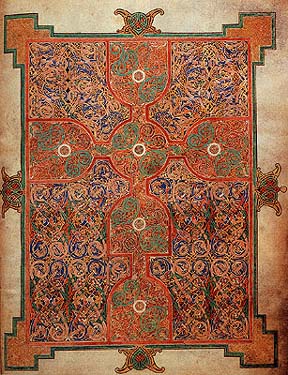 | Carpet Pages: a page of abstract design, although crosses may be woven into the design, named for their resemblance to eastern carpets. |
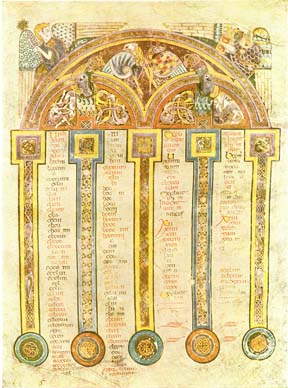 | Canon Tables: listed the passages that were parallel in the four Gospels, according to the system of Eusebius of Caesaerea. |
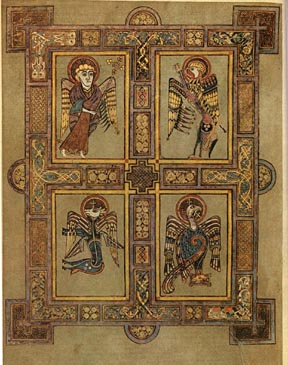 | The Evangelists are represented by symbols: Matthew the Man, Mark the Lion, Luke the Calf or Bull, and John the Eagle. |
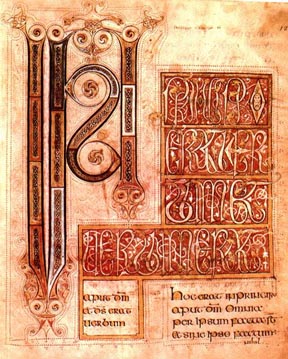 | Ornamental Initials: The opening words of the Gospels (incipits) were given enlarged major decorated initials |
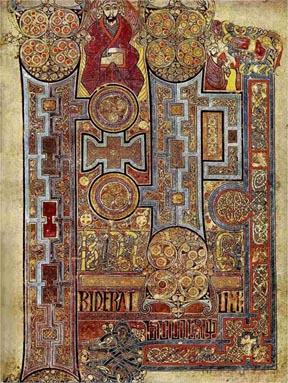 | Decoration: Interlace patterns are combined with zoomorphic forms, ribbons, plaitwork, dots, knots, grid patterns, circles and spirals can cover the whole page or simply be confined to an initial letter. |
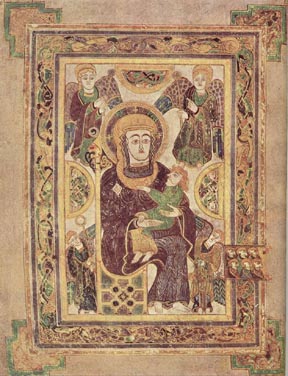 | Portraits: The Book of Kells includes several portatits: single evangelist portraits, portrait of Christ, Madonna and Child, Temptation of Christ, and the Arrest of Christ. |
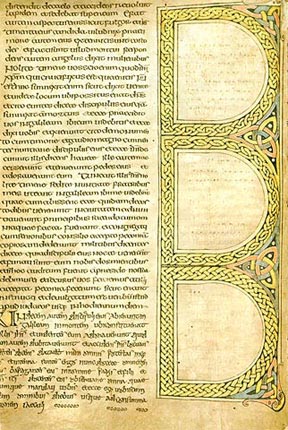 | The Durham Gospel: Produced in Lindisfarne the work of the Durham-Echternach Calligrapher. |
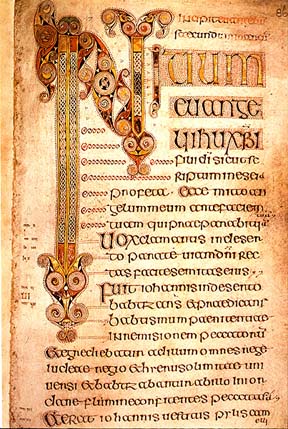 | The Book of Durrow: One of the most notable manuscripts of the period attributed possibly to Iona. |
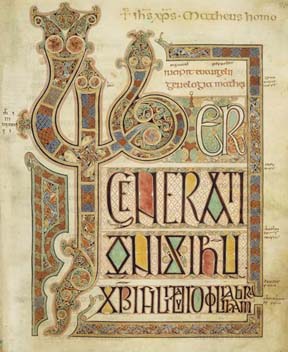 | Lindisfarne Gospels: written ca. 700, named for the monastery in which it was written. |
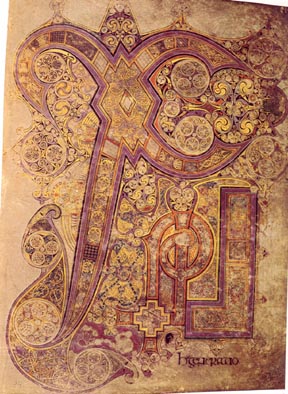 | Book of Kells: Thought to have been produced in Iona. |
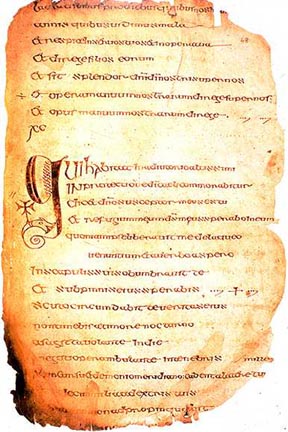 | Irish Half-Uncials: The first minuscule script, it appeared in the fifth century. These letters could be written more rapidly, and more words could be written per page. |
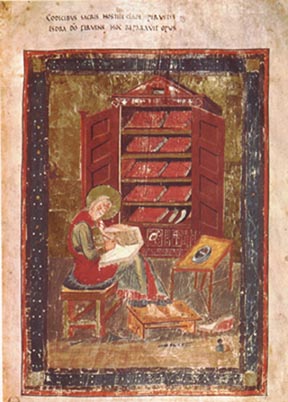 | The Codex Amiatinus was made in the Northumbrian monasteries of Wearmouth and Jarrow. |